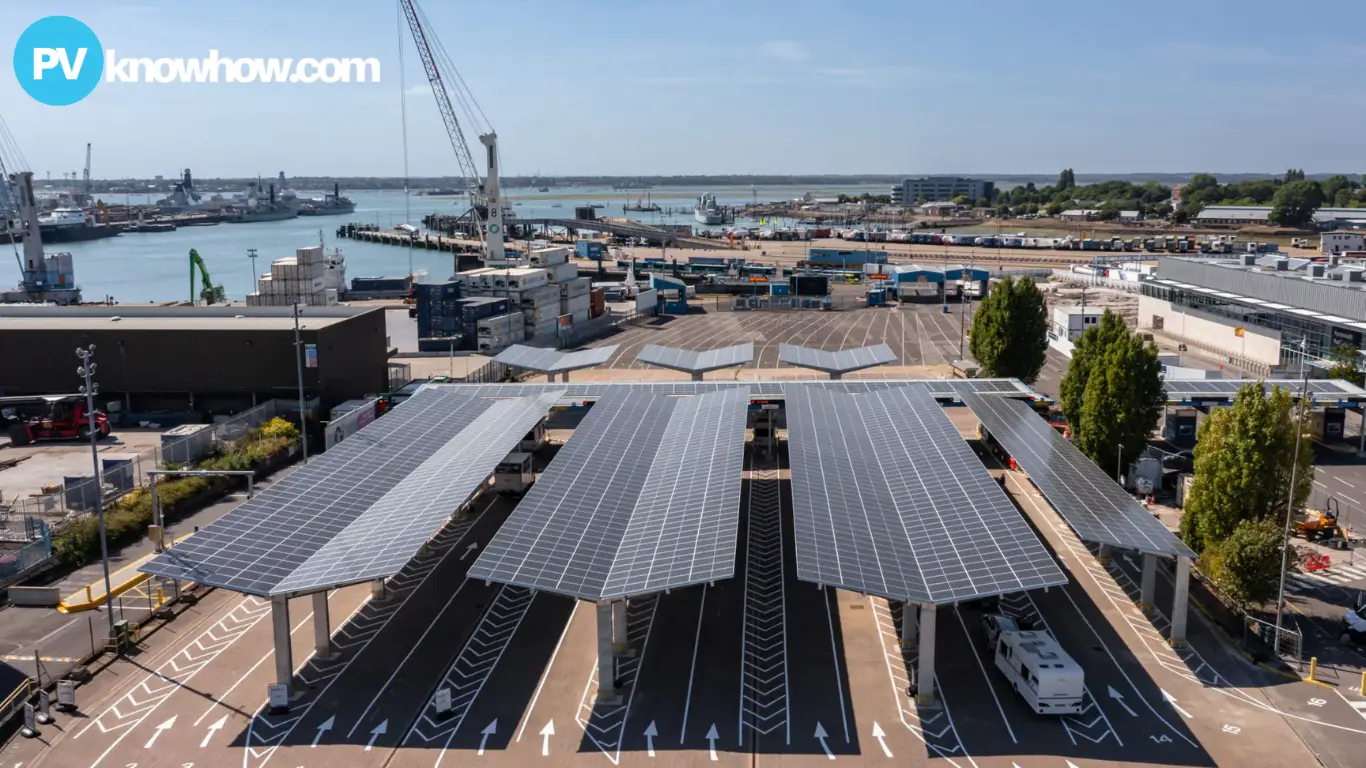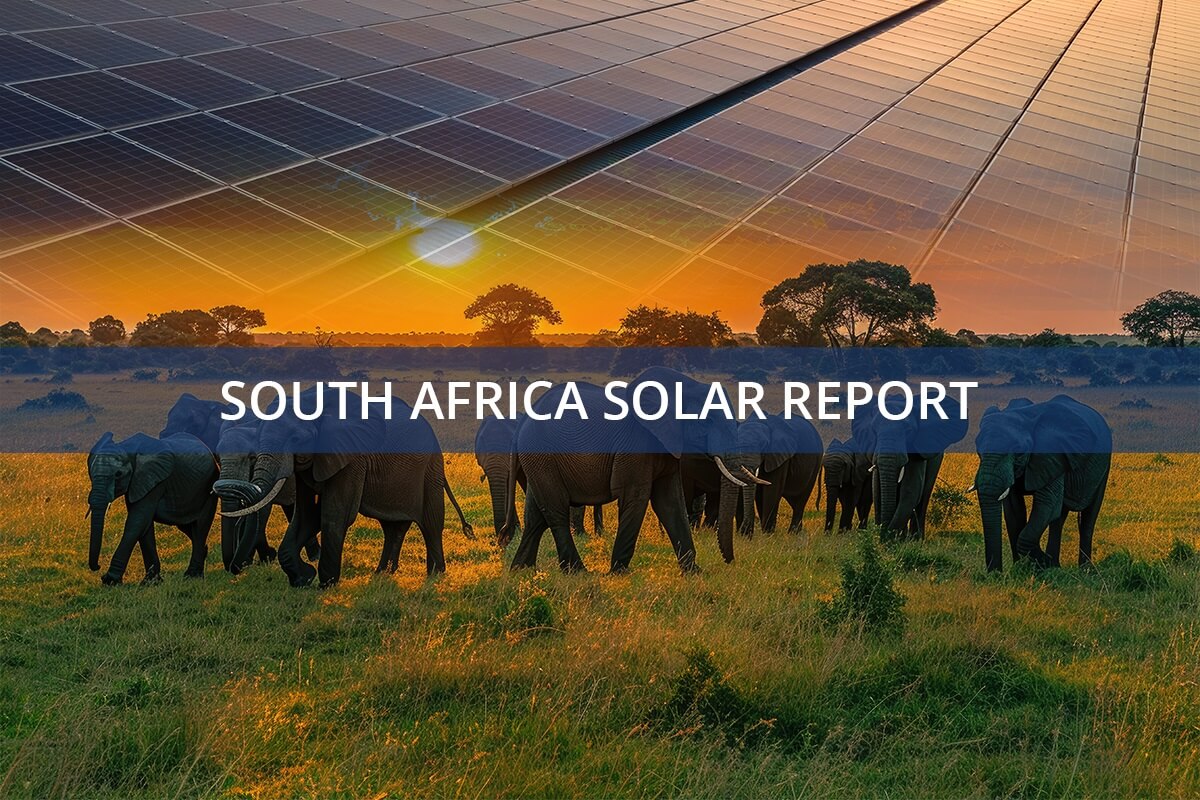South Africa will install a 20 MW solar plant at the Port of Richards Bay to decarbonize its largest coal port. This is part of a plan to add 100 MW of renewable energy across eight commercial seaports.
Transitioning From Coal to Solar
For decades, coal has been the foundation of South Africa’s energy sector, fueling economic growth while also contributing significantly to greenhouse gas emissions. Now, the industry faces major challenges due to declining global demand and increasing environmental concerns — particularly about air pollution. The urgency to shift decisively towards cleaner energy sources has never been greater.
In South Africa, solar power is emerging as a beacon of hope — especially in remote areas historically lacking electricity access. This shift offers various advantages: including reduced greenhouse gas emissions, enhanced energy security via a diversified energy mix, and the creation of new economic opportunities within the renewable energy sector.

Image: Collected
To reduce carbon emissions at its major ports, the Transnet National Ports Authority (TNPA) has selected the Amulet Group Consortium to build and manage a 20 MW solar photovoltaic plant at the Port of Richards Bay — South Africa's largest coal port. This new solar array is part of TNPA's broader goal to install around 100 MW of renewable energy across the country's eight commercial seaports.
20 MW Solar Project to Power Port
Amulet Group was chosen following an RFP process initiated by TNPA in May 2023. The consortium will build and operate a 20 MW solar power and battery energy system at the Port of Richards Bay for seven years. TNPA anticipates that the plant's design and construction will start this month and be completed by May 2026.
TNPA Managing Executive for the Eastern Region ports, Moshe Motlohi, highlighted that implementing renewable energy in the port system will reduce emissions from coal-generated electricity. In addition to renewable energy, TNPA's energy strategy includes using LNG, microgrids, and battery energy storage systems (BESS).
“The implementation of a renewable energy solution in the port system will allow for the reduction of carbon and greenhouse gas emissions from coal-generated electricity,” Motlohi stated.
Last year, TNPA issued a Request for Information (RFI) to explore developing a hydrogen fuel terminal and other related facilities at South African ports. This RFI aims to evaluate the feasibility of operating and maintaining a hydrogen import and export terminal at the major ports. The potential for replicating similar initiatives across different ports and industries nationwide is significant, thus accelerating the country's transition from coal to renewable energy sources.
The rise of solar power will inevitably affect the coal industry. While concerns about potential job losses exist, there's also an opportunity for the industry to adapt and embrace new technologies. Efforts focused on reskilling and upskilling workers can equip them with the necessary skills to thrive in the expanding renewable energy sector.
Collaborating With Global Leaders in Renewable Energy
The South African government's unwavering support for renewable energy — coupled with international partnerships and investments — will be pivotal in driving this transition. Collaborating with global leaders in renewable energy can provide access to advanced technologies and expertise, thereby propelling the country towards a sustainable future.
According to recent news, AMEA Power has signed a significant 20-year Power Purchase Agreement (PPA) for a 120MW solar PV project in South Africa, thus marking a crucial step in the nation's transition towards cleaner energy. The Doornhoek Solar PV project is expected to generate 325 GWh of clean energy annually, thereby powering approximately 97,000 households and reducing carbon dioxide emissions by 330,000 tonnes per year.
This project aligns with South Africa's commitment to increasing renewable energy sources, this aiming to reach 41% by 2030 and decommissioning coal-fired power plants. AMEA Power's investment signifies their dedication to environmental impact and socio-economic development which is demonstrated by establishing a regional hub in Johannesburg.
The unveiling of the solar array at the Port of Richards Bay carries symbolic significance for South Africa, marking a shift from a coal-dominated past to a cleaner future powered by renewable energy. As similar initiatives are launched, South Africa has the opportunity to lead the continent towards a cleaner and more sustainable energy landscape.

